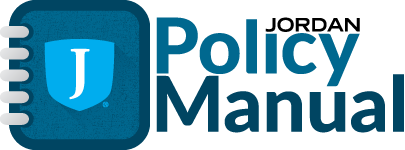- Effective - 1/24/2017
- Revision - 4/25/2023
Jordan School District will support and implement physically and emotionally safe school programs and procedures where learning can occur.
- School safety and security will be accomplished by providing a physically safe learning environment through safety and security programs that include:
- Safe and secure buildings and grounds
- Emergency preparedness
- Student, staff and patron safety and welfare
- Timely communication to families (coordinated with police) if an emergency should occur
- Yearly communication to parents containing safety procedures and protocol
- School safety and security will be further accomplished by encouraging each school to foster an emotionally safe and welcoming environment.
- The updated District Plan addressing the mental, social, emotional, and physical well-being of students and employees will be implemented throughout the District and shall include the following components:
- Clearly articulated procedures and protocols regarding the wellness needs of students and employees
- Clearly defined resources regarding suicide prevention and anti-bullying strategies
- Clearly defined education process for students, parents, faculty, and staff
- Each school will create a Code of Conduct in collaboration with the school administration, faculty, and School Community Council. An anti-bullying program will be an element of each school’s Code of Conduct and shall include the following components:
- Clearly articulated and defined desired actions and behaviors
- Clearly defined rules and consequences
- Clearly defined reporting process
- Clearly defined education process for students, parents, faculty, and staff
- The updated District Plan addressing the mental, social, emotional, and physical well-being of students and employees will be implemented throughout the District and shall include the following components:
- Evidence of the above may be requested by a Board member and provided through multiple means.
- The safety and security programs for physical safety shall be measured and assessed by:
- Jordan Safety and Security Assessments (three times per year)
- School Self-inspection Surveys (annually)
- Jordan School District Online Satisfaction Surveys (annually)
- Utah State Risk Inspections (annually)
- Utah State Fire Inspections (annually)
- Utah State Board of Health Inspections (annually)
- End of year drill reporting from schools
- Safety and Security Annual Report
- The emotionally safe environment for schools shall be measured and assessed by:
- Code of Conduct from each school provided to the appropriate Administrator of Schools and available on the school’s website (annually)
- Dates of each school’s Code of Conduct training provided to the appropriate Administrator of Schools (annually)
- District Plan with clear procedures and protocols regarding the wellness needs of students and employees
- Dates of training on the District Plan regarding the wellness needs of students and employees to be provided to the appropriate Administrator of Schools (annually)
- Data from early warning systems for student interventions
- Description of suicide, bullying, and violence prevention efforts
- Data from Skyward behavior logs
- School counselor student visit data
- The safety and security programs for physical safety shall be measured and assessed by:
- The Board of Education will receive quarterly reports on school safety drills and incidents as well as anecdotal reports of efforts to establish an emotionally safe environment. The Board will report annually to the community on the physical and mental safety of students.
